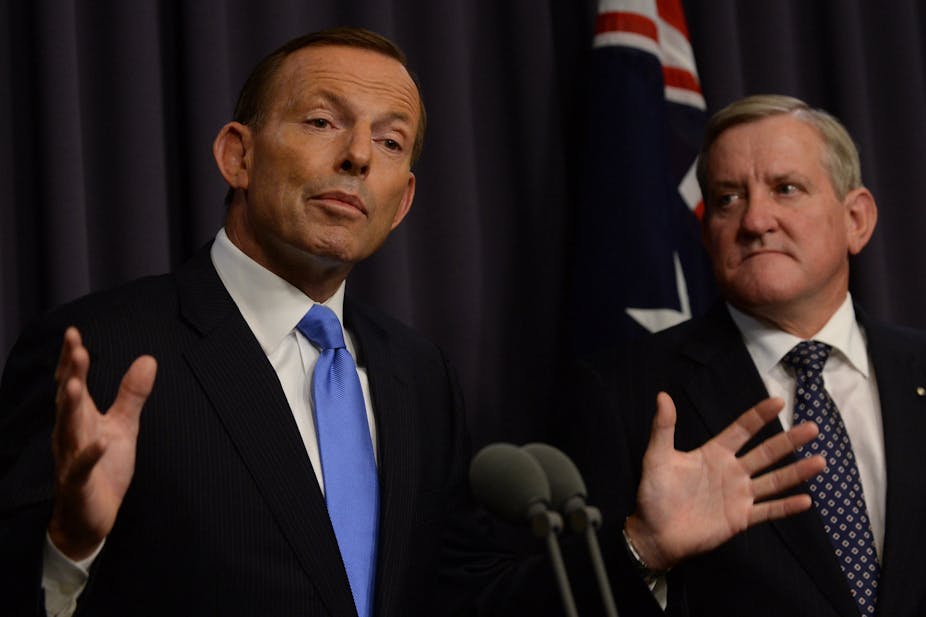Announcing the decision to refuse assistance to SPC Ardmona, Industry Minister Ian Macfarlane said:
“I think it is a clear delineation of where this government believes we need to go with industry policy”.
Coming so soon after the government’s decision not to extend assistance to Holden, it’s clear we now have a government seriously committed to a free market ideology, and which is taking a tough line on requests for industry assistance.
That simple interpretation, however, is belied by the prime minister’s promise of a grant of A$16 million for the Cadbury factory in Hobart. Perhaps that can be written off as an election promise made on the run. Tony Abbott and Kevin Rudd were both making rash promises during the election campaign.
But beyond that, the Abbott government has deliberately made two costly concessions to industry requests for assistance.
Picking winners
One was its promise to retain a concession in fringe benefits tax arrangements, allowing an employer-provided car to be assessed at a very low rate for tax purposes, even if it is not used for work. The concession dates to 1986 when around 80% of cars sold in Australia were Australian-made. It was a form of assistance to the car industry.
Now almost 80% of cars sold in Australia are imports: most of the assistance therefore would be going to the Japanese and German car industries. The main Australian beneficiary of the concession, costing around A$450 million a year in forgone tax revenue, is the salary packaging industry, which having learnt that the previous government intended to scrap it, lobbied hard for its retention.
Another government concession to industry lobbying is its plan to reverse reforms to the financial advice industry, legislated by the previous government, which require financial advisers to disclose ongoing commissions and to act always in the best interests of clients.
Before these reforms were implemented actuaries calculated that loose regulation of the industry was allowing consumers to be overcharged an average of A$900 each. Reversal of this reform will restore an easy income flow to the industry.
Both reforms are to be scrapped by the Abbott government, without any explanation why accountants helping clients to avoid tax or financial advisers living off commissions on sales are more worthy of assistance than people making cars or packaging fruit.
The A$25 million once-off assistance sought by SPC Ardmona is trivial compared with the ongoing cost of industry assistance, estimated by the Productivity Commission to have cost A$10 billion in 2011-12. That’s around A$1000 a household.
This A$10 billion splits three ways: $5 billion in direct budgetary outlays, $4 billion in tax concessions (i.e. revenue forgone), and $1 billion in the cost of tariff protection. (This cost of tariff protection is a net cost. In round figures tariffs grant $8 billion in assistance to manufacturing, while costing $7 million to other industries).
In fact, the Productivity Commission in its regular assessments of the cost of industry assistance is conservative. It does not count budgetary and other support for the private health insurance industry. Nor does it count support for superannuation in the form of tax concessions and compulsory levies.
There are measurement problems in estimating how much of this support for health insurance and superannuation counts as industry subsidies and how much is personal benefit, but it’s clear that like all other industry subsidies they come at a cost and help direct our expenditure towards certain industries, the finance industry in the case of health insurance and superannuation, and away from other areas.
Budget jitters
Ardmona and Holden suffer the misfortune that their assistance was to be in the form of budgetary outlays, which, in the current fiscal environment, is where most attention is directed. Had Ardmona’s assistance been in the form of a tariff it would have been an unnoticeable A$5 or so on our household’s annual supermarket bill, and we would never have noticed it if it was in the form of a tax concession.
The notion that the Coalition government is holding out against industry assistance does not hold up. Its concerns seem to be more about reducing reported public expenditure than about winding back industry assistance. This expenditure emphasis puts manufacturing and related industries under the spotlight, but allows other industries, particularly those in the finance sector, to go on enjoying very generous and distorting subsidies. This is in spite of warnings from the Bank of International Settlements that an over-sized finance sector can stifle economic growth.
When economists warn about the costs of “picking winners” in industry policy, they are reminding us that benefits for certain industries come at a cost to other industries and consumers. Perhaps if we weren’t so generous to the finance sector firms like Ardmona SPC wouldn’t have to beg for assistance.

